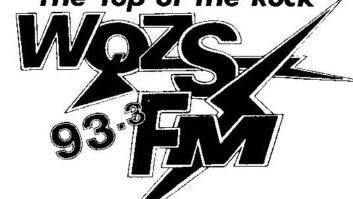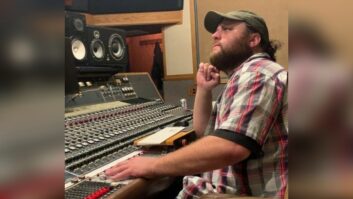
BRUSSELS — Bel RTL, a subsidiary of RTL Belgium part of RTL Group, whose parent company is the German Bertelsmann Media Group, is a generalist station broadcasting to Belgian Francophone listeners. Bel RTL is run independently from RTL in France and only buys its famous show “Les Grosses Têtes” (“Big Heads”).
RTL Group globally employs 120,000 people, including approximately 650 staff in all its divisions in Europe, with 100 dedicated specifically to the Belgian radio departments. Its revenue is entirely based on commercials.
Bel RTL began employing visual radio last September, integrating the MultiCam Radio visual radio solution from French-firm MultiCam Systems.

Eric Adelbrecht is general manager of RTL Belgium,
Bel RTL and Radio Contact. Credit: Jean-Michel Clajot
SPECIFICITY
The RTL Group’s strategy is to have “each group develop its respective programs to best fit their environment and markets,” said Eric Adelbrecht, general manager of Bel RTL and Radio Contact since 2010. He is also Musical Strategy manager for RTL Belgium. Today, Bel RTL and Radio Contact are the two leading radio stations in Francophone Belgium. The first station employs a full-time staff of 70, and the second 30 people.
Adelbrecht, who was CEO and program director at Radio Contact from 2006 to 2010, points out that the two stations are complementary: “Bel RTL has had a generalist format and targets those over 35 years of age, while Radio Contact targets a younger audience, through a musical style similar to NRJ France. We have in-house programs forged for our specific audience, even if we draw on the dynamics of RTL France,” he said.
Bel RTL is working, along with the group’s partners, on the evolution of general radio. “We must constantly fight back with the latest technology to prevent losing audience. It is a challenge, with the younger generations now using YouTube, Spotify, Pandora and other platforms rather than listening to radio. If we do not anticipate this, it could mean the end of traditional radio,” said Adelbrecht.

The RTL House in the Chaussée de Louvain area of Brussels.
Credit: [email protected]
The group has always been on the cutting edge of strategic innovation. It’s been promoting live events for over 30 years, putting the focus on both local events and leading artists, such as Céline Dion and other international stars.
In 1999, Bel RTL began simulcasting its morning radio programs on RTL-TVI, which is based in Luxembourg and part of the same group. “Technological development has been very important for Bel RTL with the emergence of visual radio and airing radio programs on TV and internet platforms, said Adelbrecht.
“We began incorporating visual radio, with the launch of “Radio Contact Vision” in 2009 and “Bel RTL Radiovision” in 2015, integrating MultiCam’s technology. In February we also upgraded Radio Contact Vision with the MultiCam system. But we are not a TV channel, we remain a radio station — our goal is to develop enriched content.”

Thierry Piette is technical and IT director for
RTL Belgium. Credit: L. Bazzoni
SYNERGY
As part of the radio visualization process, Bel RTL began using automated voice-detection cameras for its new digital TV and streaming station Bel RTL Radiovision.
Thierry Piette, technical and IT director, supervised the visual radio project, which encompassed a number of engineers. “The technical teams at RTL Belgium had a key goal — to enrich radio with video without distorting the original (radio) product and without requiring additional TV tasks from the radio engineer,” said Piette.
RTL Belgium’s in-house developers, graphic designers and video engineers designed the core of the automation for the visual part based on the MultiCam Radio solution.
Depending on the detected event and environment, the automation system will automatically run a series of videos, managing video servers or graphics systems. This particular configuration works with Netia Radio-Assist Air-DDO software. By simply turning on a microphone the voice-detection function, which manages the cameras, is enabled. Images and text data, related to the program being aired, can also automatically enrich the video stream, via a synchronized audio jingle identifying the program.
Listeners can interact with the video program, through social networks, tweets and photos that can be automatically displayed.

John Huybrechs is in charge of visual radio project at RTL Belgium.
Arnaud Anchelergue, MultiCam CEO, headed the Bel RTL project for MultiCam. He explained that it was necessary to extend its four-camera-based system, because the broadcaster required additional cameras. MultiCam thus integrated a small matrix capable of supporting 12 sources and they also increased the vocal detection engine from 6 to 12 microphones.
CHALLENGE
“We had a number of requirements that MultiCam incorporated into the system for us,” said John Huybrechs, RTL Belgium engineer in charge of the visual radio implementation. “We appreciated their ability to meet our expectations,” he said.
In addition to visual radio, Bel RTL is also studying the various possibilities of digital terrestrial radio. “It will allow us to develop our intelligent digital strategy, offer new products and a far better quality sound than FM binary digital sound — also now saturated. This will have a positive impact on radio in general,” concluded Adelbrecht.
As a consequence, RTL Belgium is looking forward to the 2017 license renewal procedure for its existing FM licenses and to obtain DAB licenses.












